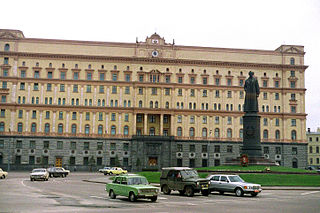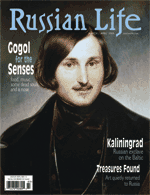Related Research Articles
Moral equivalence is a term used in political debate, usually to deny that a moral comparison can be made of two sides in a conflict, or in the actions or tactics of two sides.

Radio Free Europe/Radio Liberty (RFE/RL) is a United States government-funded organization that broadcasts and reports news, information, and analysis to countries in Eastern Europe, Central Asia, Caucasus, and the Middle East where it says that "the free flow of information is either banned by government authorities or not fully developed". RFE/RL is a private, non-profit 501(c)(3) corporation supervised by the U.S. Agency for Global Media, an independent government agency overseeing all U.S. federal government international broadcasting services.

The United States Information Agency (USIA), which operated from 1953 to 1999, was a United States agency devoted to "public diplomacy". In 1999, USIA's broadcasting functions were moved to the newly created Broadcasting Board of Governors. Its cultural exchange and non-broadcasting information functions were assigned to the newly created Under Secretary of State for Public Diplomacy and Public Affairs at the U.S. Department of State. The agency was previously known overseas as the United States Information Service (USIS).

The Cold War was a period of geopolitical tension between the United States and the Soviet Union and their respective allies, the Western Bloc and the Eastern Bloc, which began following World War II. Historians do not fully agree on its starting and ending points, but the period is generally considered to span the 1947 Truman Doctrine to the 1991 dissolution of the Soviet Union. The term cold war is used because there was no large-scale fighting directly between the two superpowers, but they each supported major regional conflicts known as proxy wars. The conflict was based around the ideological and geopolitical struggle for global influence by these two superpowers, following their temporary alliance and victory against Nazi Germany in 1945. Aside from the nuclear arsenal development and conventional military deployment, the struggle for dominance was expressed via indirect means such as psychological warfare, propaganda campaigns, espionage, far-reaching embargoes, rivalry at sports events and technological competitions such as the Space Race.

Active measures is political warfare conducted by the Soviet or Russian government since the 1920s. It includes offensive programs such as disinformation, propaganda, deception, sabotage, destabilization, subversion, and espionage. The programs were based on foreign policy priorities of the Soviet Union.
The Advertising Council, commonly known as the Ad Council, is an American nonprofit organization that produces, distributes, and promotes public service announcements on behalf of various sponsors, including nonprofit organizations, non-governmental organizations and agencies of the United States government.
Cultural diplomacy is a type of public diplomacy and soft power that includes the "exchange of ideas, information, art, language and other aspects of culture among nations and their peoples in order to foster mutual understanding". The purpose of cultural diplomacy is for the people of a foreign nation to develop an understanding of the nation's ideals and institutions in an effort to build broad support for economic and political goals. In essence "cultural diplomacy reveals the soul of a nation", which in turn creates influence. Though often overlooked, cultural diplomacy can and does play an important role in achieving national security efforts.
Blowback is a term originating from within the Central Intelligence Agency, explaining the unintended consequence and unwanted side-effects of a covert operation. To the civilians suffering the blowback of covert operations, the effect typically manifests itself as "random" acts of political violence without a discernible, direct cause; because the public—in whose name the intelligence agency acted—are unaware of the effected secret attacks that provoked revenge (counter-attack) against them.

Russian Life, previously known as The USSR and Soviet Life, is a 64-page color bimonthly magazine of Russian culture. It celebrated its 60th birthday in October 2016. The magazine is written and edited by American and Russian staffers and freelancers. While its distant heritage is as a "polite propaganda" tool of the Soviet and Russian government, since 1995 it has been privately owned and published by a US company, Storyworkz, Inc.
Economic planning is a resource allocation mechanism based on a computational procedure for solving a constrained maximization problem with an iterative process for obtaining its solution. Planning is a mechanism for the allocation of resources between and within organizations contrasted with the market mechanism. As an allocation mechanism for socialism, economic planning replaces factor markets with a procedure for direct allocations of resources within an interconnected group of socially owned organizations which together comprise the productive apparatus of the economy.
The Cold War was reflected in culture through music, movies, books, television and other media, as well as sports, social beliefs, and behavior. One major element of the Cold War was the presumed threat of a nuclear war and annihilation; another was espionage. Many works use the Cold War as a backdrop, or directly take part in fictional conflict between the United States and the Soviet Union. The period 1953–62 saw Cold War themes first enter the mainstream culture as a public preoccupation. For the historical context in the US, see United States in the 1950s.
Operation PBHistory was a covert operation carried out in Guatemala by the United States Central Intelligence Agency (CIA). It followed Operation PBSuccess, which led to the overthrow of Guatemalan President Jacobo Árbenz in June 1954 and ended the Guatemalan Revolution. PBHistory attempted to use documents left behind by Árbenz's government and by organizations related to the communist Guatemalan Party of Labor to demonstrate that the Guatemalan government had been under the influence of the Soviet Union, and to use those documents to obtain further intelligence that would be useful to US intelligence agencies. It was an effort to justify the overthrow of the elected Guatemalan government in response to the negative international reactions to PBSuccess. The CIA also hoped to improve its intelligence resources about communist parties in Latin America, a subject on which it had little information.

Amerika was a Russian-language magazine published by the United States Department of State during the Cold War for distribution in the Soviet Union. It was intended to inform Soviet citizens about American life. Amerika was distinguished among other Soviet publications by its high-grade paper, bright printing and numerous photos. The magazine has been described as "polite propaganda" and featured high-quality photography and articles about everyday life in the United States, as well as profiles of famous American people and institutions. Later it briefly existed as America Illustrated. 454 issues in total were published.

The American National Exhibition(July 25 to Sept. 4, 1959) was an exhibition of American art, fashion, cars, capitalism, model homes and futuristic kitchens that attracted 3 million visitors to its Sokolniki Park, Moscow venue during its six-week run. The Cold War event is historic for the Nixon-Khrushchev "kitchen debate" held first at the model kitchen table, outfitted by General Electric, and then continued in the color television studio where it was broadcast to both countries, with each leader arguing the merits of his system, and a conversation that "escalated from washing machines to nuclear warfare."

After the end of World War II Germany was separated into nation-states. Each nation-state was governed by a different country because officials could not agree on peace terms. The Soviet Union had claimed the eastern portion of the country. In 1947, the "German People's Congress for Unity and Just Peace" met in Berlin. The Congress was to take the demands of all the occupied zones, and create a peace treaty which would enact a centralized German government. In order to have their nation-state properly represented, the Soviets created the German Democratic Republic in 1949 when they officially approved their constitution in May.
Capitalist propaganda is promotion of capitalism, often via mass media, education, or other institutions, primarily by the ruling private and political elite. Capitalist propaganda is commonly deployed in capitalist countries to maintain the cultural hegemony of capitalism, by positioning it as the supreme and only valid system, eliminating opposing and dissenting views, and portraying non-capitalist perspectives and countries as comparatively incompetent and inferior, thus reinforcing capitalism as the dominant ideology. Capitalist propaganda may have lasting psychological effects that remain in a population even if the official government of the people is no longer capitalist, which can produce political instability and rebellion. The term capitalist propaganda has been used since at least the early 20th century to describe how propaganda is used by the capitalist class to indoctrinate workers to act against their own interests.
The Interagency Active Measures Working Group was a group led by the United States Department of State and later by the United States Information Agency (USIA). The group was formed early during the Reagan administration, in 1981, as an effort to counter aggressive Soviet disinformation.
The post–Cold War era is a period of history that follows the end of the Cold War, which represents history after the 1991 fall of the Soviet Union.

Political warfare is the use of political means to compel an opponent to do one's will, based on hostile intent. The term political describes the calculated interaction between a government and a target audience, including another state's government, military, and/or general population. Governments use a variety of techniques to coerce certain actions, thereby gaining relative advantage over an opponent. The techniques include propaganda and psychological operations (PsyOps), which service national and military objectives respectively. Propaganda has many aspects and a hostile and coercive political purpose. Psychological operations are for strategic and tactical military objectives and may be intended for hostile military and civilian populations.
Sovfoto was established in 1932 as the only agency to represent Soviet photojournalism in America. It continues today as a commercial entity Sovfoto/Eastfoto. Collections from its archive are held also at MacLaren Art Centre in Barrie, Canada which in 2001 was donated 23,116 vintage gelatin silver prints dating from 1936 to 1957, while University of Massachusetts Amherst holds the Tass Sovfoto Photograph Collection, 1919–1963, the majority being from 1943–1963.
References
- Castillo, Greg (2010). Cold War on the Home Front: The Soft Power of Midcentury Design. Minneapolis: University of Minnesota Press. ISBN 978-0-8166-4691-3.
- Hixson, Walter L. (1998). Parting the Curtain: Propaganda, Culture, and the Cold War, 1945-1961. New York: St. Martin's Press. ISBN 0-312-17680-5.